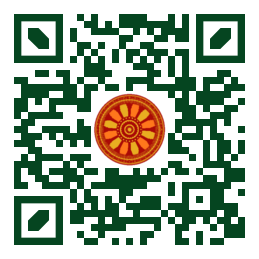
:: International Transaction Journal of Engineering, Management, & Applied Sciences & Technologies
http://TuEngr.com

ISSN 2228-9860
eISSN 1906-9642
CODEN: ITJEA8
FEATURE PEER-REVIEWED ARTICLE
Vol.11(15) (2020) |
-
An Analysis of Self-Concept between Homeless and Common Women in Pakistan
 Samra Maqbool, Zhao Wei, Uzma Sarwar, Samina Zamir, Hafiz Muhammad Ihsan Zafeer (School of Education, Shaanxi Normal University, Xi'an CHINA).
Samra Maqbool, Zhao Wei, Uzma Sarwar, Samina Zamir, Hafiz Muhammad Ihsan Zafeer (School of Education, Shaanxi Normal University, Xi'an CHINA).
Disciplinary: Woman Studies, Humanities, Homeless Study.
DOI: 10.14456/ITJEMAST.2020.303
Keywords: Self-concept; Beliefs, Homeless shelter; Sentiments; Homelessness; Social stigma; Shelter homes; Family violence.
AbstractThis study aims to discover the association between the self-concept of homeless women and common women. The samples of participants were 60. The self-concept scale was in Urdu and consisted of 52 items to measure self-concept. This study was hypothesized that the self-concept of homeless women should be lower than common women. Result designated that homeless women have higher self-concept than common women. Regarding Education, results specified that all groups, those women whose education level is matriculation have lower self-concept than those whose education level is above matriculation. According to marital status, there are no differences in results on self-concept among the groups of unmarried and married women. Age was one more demographic on the self-concept scale adults have a high self-concept than adolescents in the overall group.Paper ID: 11A15O
Cite this article:
Maqbool, S., Wei, Z., Sarwar, U., Zamir, S., Zafeer, H. M. I. (2020). An Analysis of Self-Concept between Homeless and Common Women in Pakistan. International Transaction Journal of Engineering, Management, & Applied Sciences & Technologies, 11(15), 11A15O, 1-9. http://doi.org/10.14456/ITJEMAST.2020.303
References
- Ansari, Z., Farooqi, G., Yasmin, M., Khan, S., & Farooqi, S. (1982). Development of an Urdu Adjective Checklist. Islamabad: National Institute of Psychology.
- Baptista, I. (2010). Women and homelessness. Homelessness research in Europe, 163-186.
- Bhattacharya, S. (2014). Status of women in Pakistan. Journal of the Research Society of Pakistan, 51(1).
- Borchard, K. (2000). Fear of and sympathy toward homeless men in Las Vegas. Humanity & Society, 24(1), 3-18.
- Byrne, B. M., & Gavin, D. A. (1996). The Shavelson Model revisited: Testing for the structure of academic self-concept across pre-, early, and late adolescents. Journal of Educational Psychology, 88(2), 215.
- Critelli, F. M., & Willett, J. (2010). Creating a safe haven in Pakistan. International Social Work, 53(3), 407-422.
- Dasgupta, P. (1995). An inquiry into well-being and destitution. Oxford University Press on Demand.
- Fenigstein, A. (1987). On the nature of public and private self?consciousness. Journal of personality, 55(3), 543-554.
- Gangoli, G., McCarry, M. J., & Razak, A. (2006). Forced marriage and domestic violence among South Asian communities in North East England. School for Policy Studies, University of Bristol and Northern Rock.
- Grubb, E. L., & Stern, B. L. (1971). Self-concept and significant others. Journal of Marketing Research, 8(3), 382-385.
- Hawkins, P. (1991). The spiritual dimension of the learning organisation. Management Education and Development, 22(3), 172-187.
- Jibeen, T. (2014). From home to shelter home: Victimization of young women in Pakistan. Canadian Journal of Behavioural Science/Revue canadienne des sciences du comportement, 46(4), 475.
- Johnson, R., & Carter, M. (1980). Flight of the young: Why children run away from their homes. Adolescence, 15(58), 483.
- Katzir, M., & Eyal, T. (2013). When stepping outside the self is not enough: A self-distanced perspective reduces the experience of basic but not of self-conscious emotions. Journal of Experimental Social Psychology, 49(6), 1089-1092.
- Koenen, K. C., Moffitt, T. E., Caspi, A., Taylor, A., & Purcell, S. (2003). Domestic violence is associated with environmental suppression of IQ in young children. Development and Psychopathology, 15(2), 297-311.
- Landon Jr, E. L. (1974). Self-concept, ideal self-concept, and consumer purchase intentions. Journal of consumer research, 1(2), 44-51.
- Lynch, M. F., La Guardia, J. G., & Ryan, R. M. (2009). On being yourself in different cultures: Ideal and actual self-concept, autonomy support, and well-being in China, Russia, and the United States. Journal of Positive Psychology, 4(4), 290-304.
- Marshall, E. J. (1996). Homeless women. Homelessness and mental health. Cambridge University Press, Cambridge, 59-77.
- Mishra, S. (2016). Self Concept-A Person's Concept of Self-Influence. International Journal of Recent Research Aspects, 1, 8-13.
- Pervez, S. (1982). Analysis of mass media appealing to women. Women?s Division, Government of Pakistan.
- Robertson, M. J. (1991). Homeless youth: An overview of recent literature. Homeless children and youth: A new American dilemma, 33-68.
- Shamim, A., Azeem, P., & Naqvi, S. M. M. A. (2014). Impact of foreign direct investment on poverty reduction in Pakistan. International Journal of Academic Research in Business and Social Sciences, 4(10), 465.
- Shinn, M., Knickman, J. R., & Weitzman, B. C. (1991). Social relationships and vulnerability to becoming homeless among poor families. American psychologist, 46(11), 1180.
- Snow, D. A., & Anderson, L. (1991). Researching the homeless. A case for the case study, 148-173.
- Zia, S., & Bari, F. (1999). Baseline Report on Women's Participation in Political and Public Life in Pakistan. October 1999: Aurat Publication and Information Service Foundation.
Other issues:
Vol.11(14)(2020)
Vol.11(13)(2020)
Vol.11(12)(2020)
Vol.11(11)(2020)
Archives
Call-for-Papers
Call-for-Scientific Papers
Call-for-Research Papers: ITJEMAST invites you to submit high quality papers for full peer-review and possible publication in areas pertaining engineering, science, management and technology, especially interdisciplinary/cross-disciplinary/multidisciplinary subjects.
To publish your work in the next available issue, your manuscripts together with copyright transfer document signed by all authors can be submitted via email to Editor @ TuEngr.com (no space between). (please see all detail from Instructions for Authors)
Publication and peer-reviewed process:
After the peer-review process (4-10 weeks), articles will be on-line published in the available next issue. However, the International Transaction Journal of Engineering, Management, & Applied Sciences & Technologies cannot guarantee the exact publication time as the process may take longer time, subject to peer-review approval and adjustment of the submitted articles.